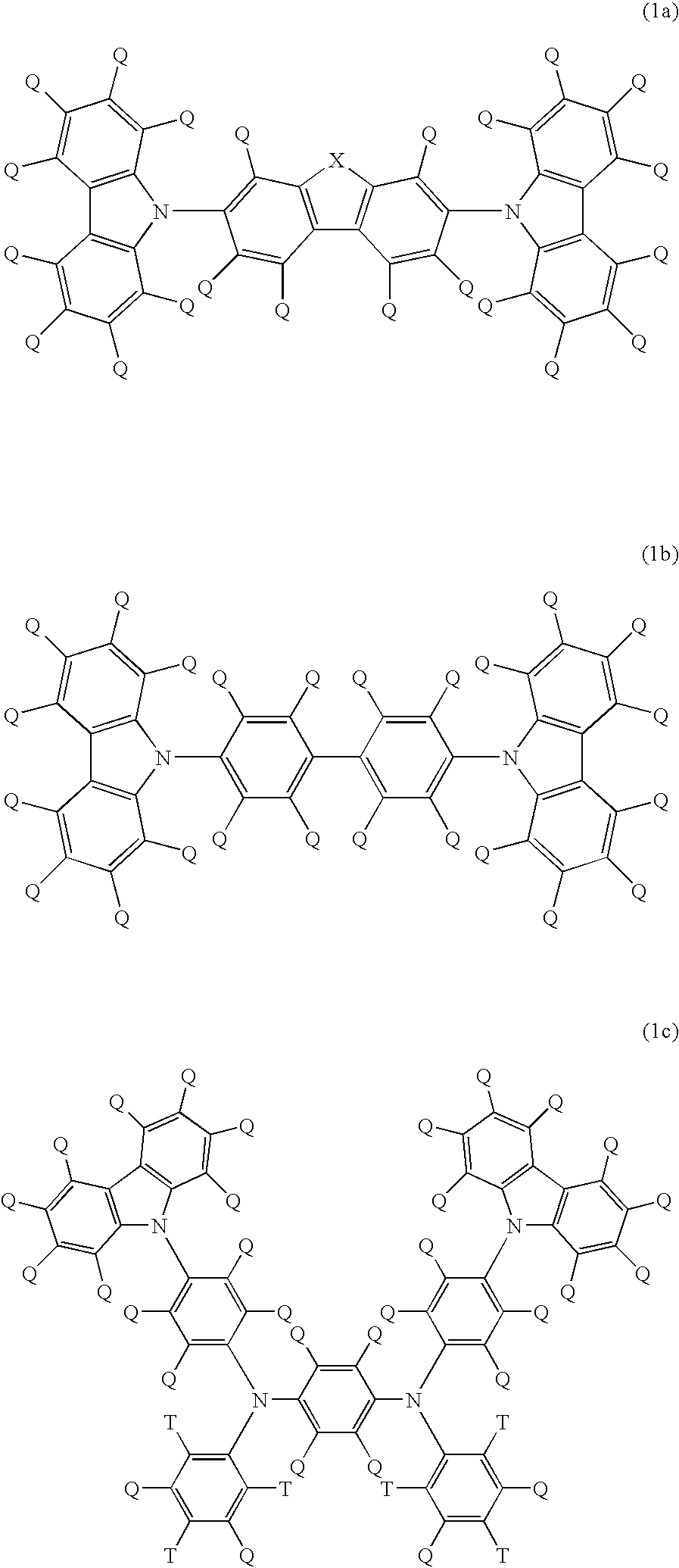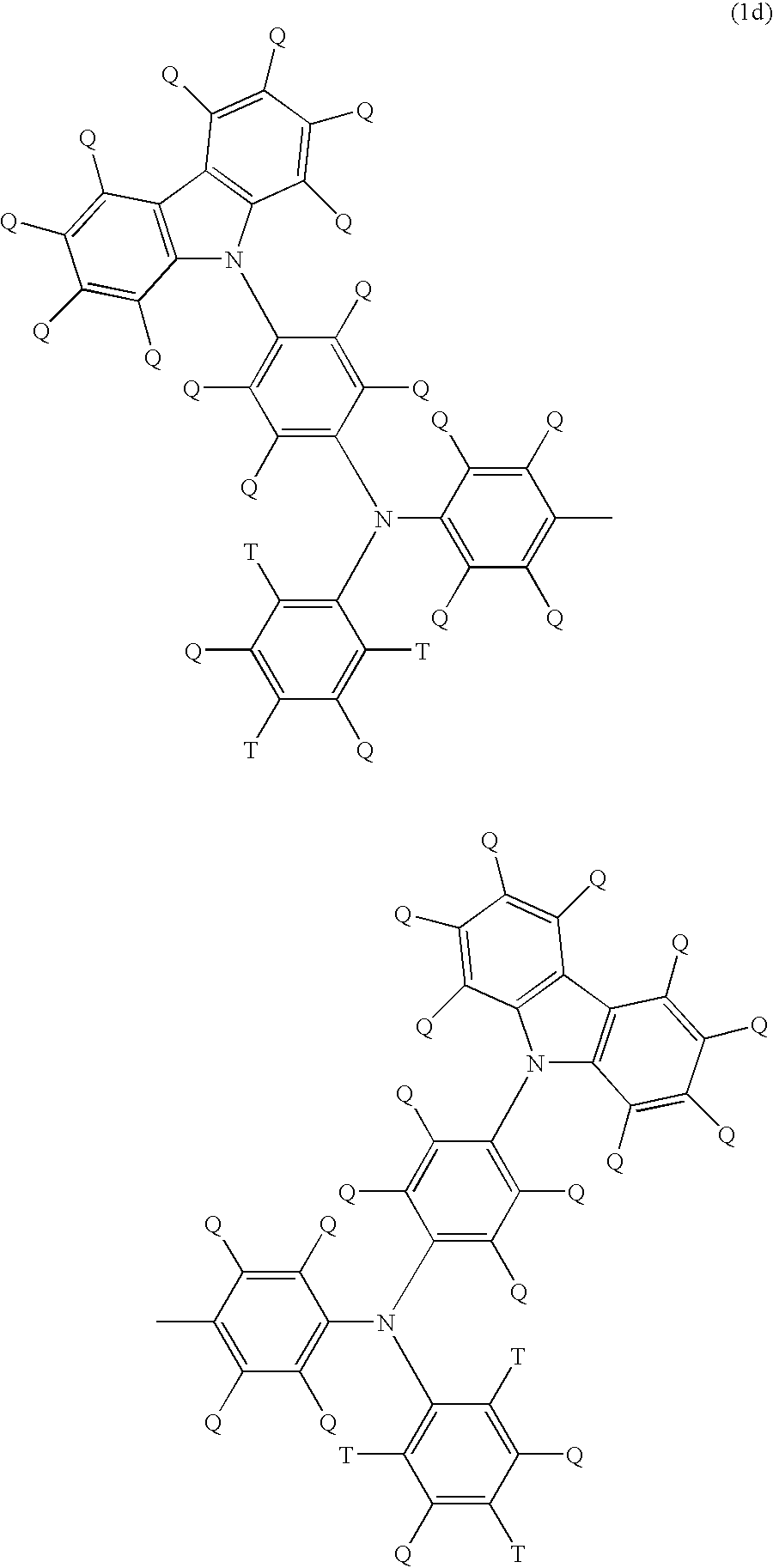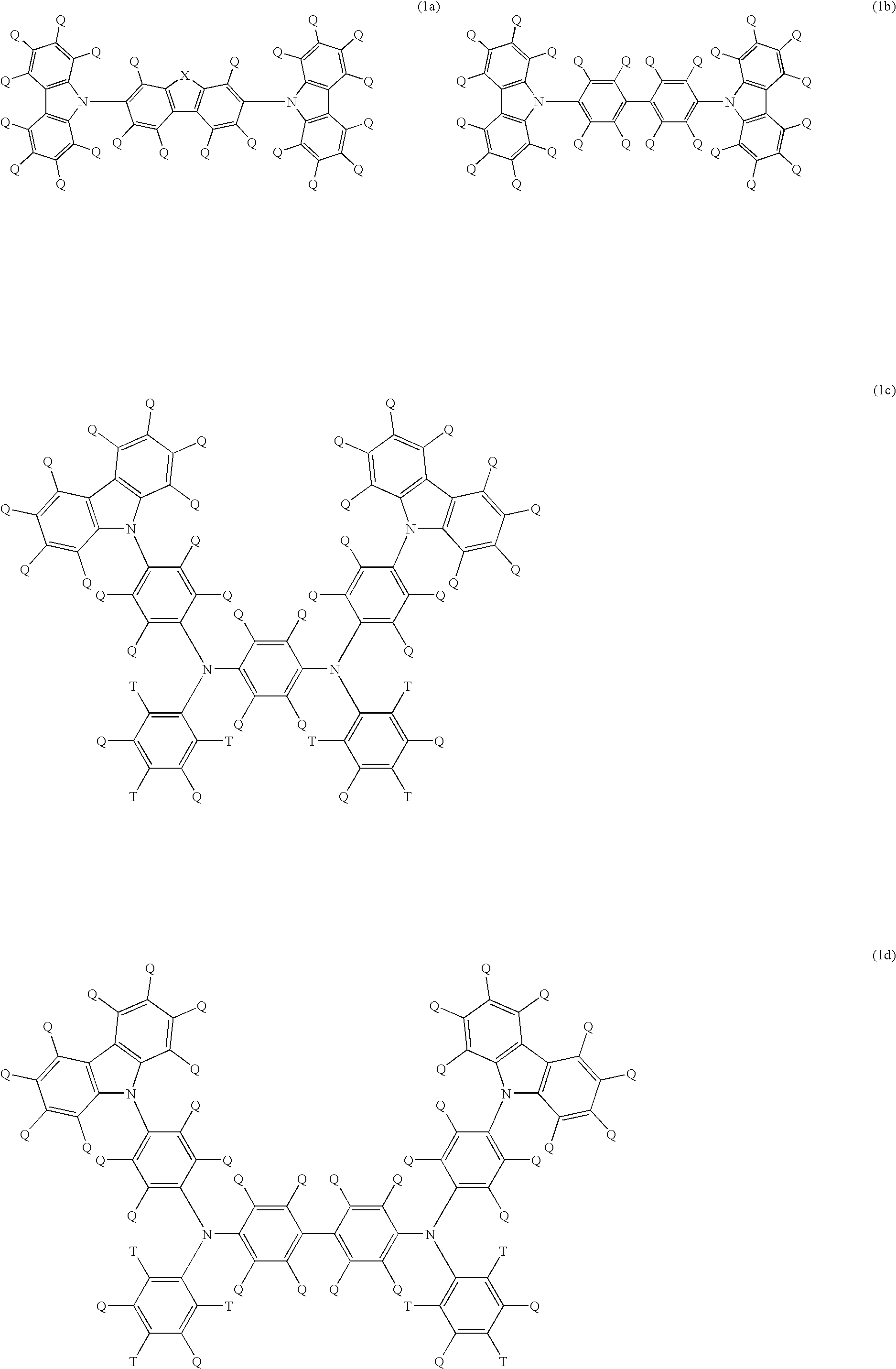Light emitting polymer composition and polymer light emitting device
a technology of light-emitting devices and polymer compositions, applied in the direction of discharge tube luminescnet screens, organic semiconductor devices, organic chemistry, etc., can solve the problems of unsatisfactory device efficiency, and achieve the effect of high efficiency
- Summary
- Abstract
- Description
- Claims
- Application Information
AI Technical Summary
Benefits of technology
Problems solved by technology
Method used
Image
Examples
synthesis example 1
Synthesis of 4-t-butyl-2,6-dimethylbromobenzene
[0176]
[0177]Under an inert atmosphere, into a 500 ml three-necked flask was placed 225 g of acetic acid, and 24.3 g of 5-t-butyl-m-xylene was added. Subsequently, 31.2 g of bromine was added, then, reacted at 15 to 20° C. for 3 hours.
[0178]The reaction liquid was added to 500 ml of water and the deposited precipitate was filtrated. The precipitate was washed with 250 ml of water twice, to obtain 34.2 g of white solid.
[0179]1H-NMR (300 MHz / CDCl3):
[0180]δ(ppm) 1.3 [s, 9H], 2.4 [s, 6H], 7.1 [s, 2H]
[0181]MS (FD+) M+ 241
synthesis example 2
Synthesis of N,N′-diphenyl-N,N′-bis(4-t-butyl-2,6-dimethylphenyl)-1,4-phenylenediamine
[0182]
[0183]Under an inert atmosphere, into a 100 ml three-necked flask was placed 36 ml of deaerated dehydrated toluene, and 0.63 g of tri(t-butyl)phosphine was added. Subsequently, 0.41 g of tris(dibenzylideneacetone)dipalladium, 9.6 g of the above-described 4-t-butyl-2,6-dimethylbromobenzene, 5.2 g of t-butoxysodium and 4.7 g of N,N′-diphenyl-1,4-phenylenediamine were added, then, reacted at 100° C. for 3 hours.
[0184]The reaction liquid was added to 300 ml of saturated saline and extracted with 300 ml of chloroform warmed at about 5° C. The solvent was distilled off, then, 100 ml of toluene was added and the mixture was heated until dissolution of solid and allowed to cool, then, the precipitate was filtrated to obtain 9.9 g of white solid.
synthesis example 3
Synthesis of N,N′-bis(4-bromophenyl)-N,N′-bis(4-t-butyl-2,6-dimethylphenyl)-1,4-phenylenediamine
[0185]
[0186]Under an inert atmosphere, into a 1000 ml three-necked flask was placed 350 ml of dehydrated N,N-dimethylformamide, and 5.2 g of the above-described N,N′-diphenyl-N,N′-bis(4-t-butyl-2,6-dimethylphenyl)-1,4-phenylenediamine was dissolved, then, N-bromosuccinimide 3.5 g / N,N-dimethylformamide solution was dropped in an ace bath, and reacted over night and day.
[0187]150 ml of water was added to the reaction liquid, and the deposited precipitate was filtrated and washed with 50 ml of methanol twice to obtain 4.4 g of white solid.
[0188]1H-NMR (300 MHz / THF-d8):
[0189]δ(ppm)=1.3 [s, 18H], 2.0 [s, 12H], 6.6˜6.7 [d, 4H], 6.8˜6.9 [br, 4H], 7.1 [s, 4H], 7.2˜7.3 [d, 4H]
[0190]MS (FD+) M+ 738
PUM
| Property | Measurement | Unit |
|---|---|---|
| Time | aaaaa | aaaaa |
| Percent by mass | aaaaa | aaaaa |
| Percent by mass | aaaaa | aaaaa |
Abstract
Description
Claims
Application Information
 Login to View More
Login to View More - R&D
- Intellectual Property
- Life Sciences
- Materials
- Tech Scout
- Unparalleled Data Quality
- Higher Quality Content
- 60% Fewer Hallucinations
Browse by: Latest US Patents, China's latest patents, Technical Efficacy Thesaurus, Application Domain, Technology Topic, Popular Technical Reports.
© 2025 PatSnap. All rights reserved.Legal|Privacy policy|Modern Slavery Act Transparency Statement|Sitemap|About US| Contact US: help@patsnap.com



